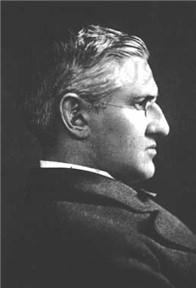Yesterday’s posts unwittingly had a strange theme: good things arising out of tragic situations. There was the assassination in Pakistan, in which the grieving family reached out to the aggrieved in Arizona; there was the Tuscon massacre itself, which reminded us that people like Daniel Hernandez still exist, willing to risk their lives to help their fellow man. In fact, after yesterday’s post, I heard about Dorwan Stoddard, a 76 year-old man that Loughner killed. When the shooting started, Dorwan threw himself on top of his wife, Mavanell, using his body to shield her. Loughner shot him in the head, but Dorwan’s sacrificial love almost certainly saved his wife’s life (she was shot in the leg, but is expected to survive). And on a related note, there were the Egyptian Muslims who formed a human chain around the Coptic church to protect them from Islamic terrorists, risking their own lives for that of their neighbors.
All three of these stories serve as a good jumping off point for one more. On Saturday, I went to Sanctuary: A Sacred Sound Concert, which was something between a praise and worship service and a concert – a Baptist praise group was backed up by the National Symphony Orchestra. It was truly beautiful. The conductor, Nolan Williams, Jr. of the Metropolitan Baptist Church, told an inspiring (and true) story about one of the hymns.
 Horatio Spafford (1828 – 1888), was an American lawyer, happily married with a son and four daughters. All of this started to change in the early 1870s. In 1871, Spafford’s four year-old son died; shortly thereafter, the Great Chicago Fire of 1871 wiped him out financially, as his investments literally went up in smoke. Two years later, still sorting out the aftermath of the fire, Spafford sent his wife and four daughters ahead of him to Europe, where they intended to hear Stafford’s friend D. L. Moody preach in England.
Horatio Spafford (1828 – 1888), was an American lawyer, happily married with a son and four daughters. All of this started to change in the early 1870s. In 1871, Spafford’s four year-old son died; shortly thereafter, the Great Chicago Fire of 1871 wiped him out financially, as his investments literally went up in smoke. Two years later, still sorting out the aftermath of the fire, Spafford sent his wife and four daughters ahead of him to Europe, where they intended to hear Stafford’s friend D. L. Moody preach in England.
Along the way, more tragedy struck. The ship Spafford’s family was on sunk, and all four of his daughters drowned in the Atlantic Ocean. His wife, on arriving to England, sent the devastating news by telegram, writing only, “Saved Alone.” While some parents bear the misfortune of outliving one child, the Spaffords had outlived five. Horatio set out at once to England, to be with his mourning wife. Along the way, his ship is said to have passed the spot his daughters drown.
His life read like something out of the Book of Job, as tragedy followed disaster. Which makes what happened next all the more powerful. On the ship to see his wife, with the deaths of his daughters never far from mind, Spafford had plenty of time to himself, time to think, and time to write. But what he wrote wasn’t some angry screed against God for letting him suffer. Rather, it was one of the most beautiful hymns in American history, It is Well with My Soul. The hymn shows how Spafford got through it all, by entrusting it all to Christ. It begins:
When peace, like a river, attendeth my way,
When sorrows like sea billows roll;
Whatever my lot, Thou hast taught me to know,
It is well, it is well with my soul.
It is well, with my soul,
It is well, with my soul,
It is well, it is well, with my soul.
That absolute conviction of trust in God, in good times and in bad, is a virtue we should all strive for. Spafford just happened to live and write about it more fully and more beautifully than most of us ever will.
Update: Some of the details are more legendary than true. Robert at Worldwise Hymns clarifies.
I love the story of Horatio Spafford and the song that
he wrote is one of my favorites. I’m sorry that I don’t
hear it at Catholic funerals; I’m going to request that
they do it at mine.
Greetings from Wordwise Hymns. And thanks for your comments on one of my favourite hymns. I posted an article on it today–and also linked to an earlier article on my site.
Just to correct a couple of details: Mrs. Spafford’s telegram said more than just “Saved alone.” (I have a photograph of it on my site.) And the hymn was written about 3 years after the tragedy–in spite of the romantic story that it was written on the ship as Spafford passed over the site of the accident.
Robert,
Thanks for clearing that up!